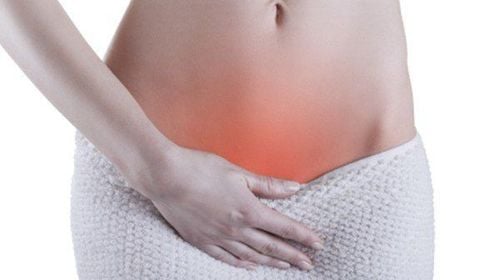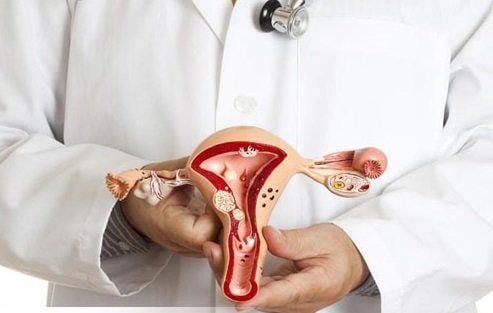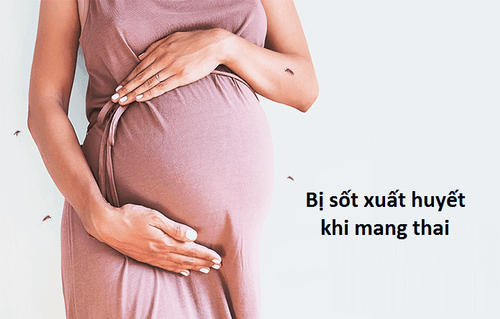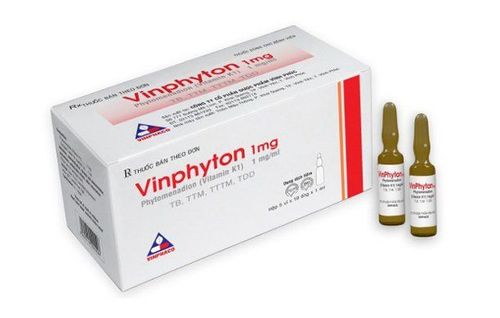This is an automatically translated article.
The article was professionally consulted by Specialist Doctor I Truong Nghia Binh - Obstetrician-Gynecologist - Department of Obstetrics and Gynecology - Vinmec Da Nang International General Hospital.
Postpartum hemorrhage is defined as a cumulative blood loss of 1,000 ml or blood loss due to signs of hypovolemia within 24 hours of birth. It is the leading cause of maternal death worldwide.
1. Causes of postpartum hemorrhage
After giving birth, the uterus usually contracts and pushes the placenta out. When the placenta is removed, women often have these contractions that help put pressure on the blood vessels to limit postpartum bleeding. However, if the uterus does not contract strongly enough, these blood vessels will bleed freely. This is the most common cause of postpartum hemorrhage.In addition, some causes of postpartum haemorrhage include:
Weak uterine muscles due to multiple births, uterine fibroids, malformed uterus; The uterus is stretched too much due to multiple pregnancy, polyhydramnios,... Prolonged labor, amniotic infection; Residual placenta in the uterine cavity; Maternal weakness, anemia, hypertension, pregnancy toxicity; History of miscarriage, multiple abortions; Ever had vegetative endometritis; After premature birth, handle stillbirth, give birth quickly, especially in the standing position; The vegetable cord is short, wrapped around the neck many times; Taking vegetables improperly; Incorrect birthing.
2. Signs of postpartum haemorrhage
Signs of vaginal bleeding after vaginal delivery and possible bleeding after cesarean section include:Uncontrolled bleeding: Bleeding from the genital tract immediately after delivery and placental abruption. The amount of blood that comes out can be more or less, bright red or bruised, blood clots or thin blood. Blood stagnation in the uterine cavity makes the uterus increase in volume, the fundus of the uterus rises gradually, the uterus enlarges horizontally, becoming soft; Blood pressure drops; Increased heart rate, pale skin, thirst; Cold hands and feet, sweating; Decreased red blood cell count; Swelling and pain in the vagina and nearby area if the bleeding is due to a hematoma; The safety sphere is not seen on the scapula.

3. Complications of postpartum hemorrhage
Depending on the degree of blood loss and whether the resuscitation and hemostasis is active or not, postpartum hemorrhage can cause various serious and mild complications such as shock due to hypovolemia, leading to renal failure, renal failure, and renal failure. multiple organs and mortality. Postpartum haemorrhage is also a predisposing factor for postpartum infection.Long-term complications of postpartum hemorrhage include anemia, thrombophlebitis, Sheehan's syndrome (due to pituitary necrosis leading to weakness, emaciation, hair loss, loss of milk, amenorrhea), inability to have more children in case of having to have a hysterectomy.
4. Prevention of postpartum haemorrhage
To reduce the frequency and mortality of postpartum haemorrhage, it is important to prevent bleeding before it occurs. Provision should be made for all births. Some prophylactic principles to remember include:Avoid prolonged labor, by closely monitoring labor progress, on monitoring, uterine contractions, fetal heart rate and cervical dilation; Injection of oxytocin (10 IU) is recommended for the prevention of postpartum haemorrhage; Prevention of amniotic infection, with antibiotics and early termination of pregnancy; Careful use of anesthetics, anesthetics, and analgesics during labor; Correction of coagulation disorders (if any). By relying on a complete coagulation test, platelet count, and a thorough history of blood disease. It is necessary to have a specialist examination in internal hematology to have a positive treatment direction; Do not perform delivery procedures unless clearly indicated or unqualified. When performing the procedure, it must be done gently and with the correct technique; Find the cause and treat immediately the case of strong contractions, weak contractions. Once unfavorable, should cesarean section to ensure safety for mother and baby;

Postpartum care is a continuous, comprehensive process for both mother and baby, including vaginal birth or cesarean section, women need recovery time to ensure that there are no postpartum complications. Postpartum haemorrhage is a dangerous disease that needs to be examined and treated soon, if not treated promptly, the mother will lose blood, which can dangerously lead to death.
After giving birth, the mother's body changes, the mother can suffer from many diseases such as postpartum hemorrhage, urinary incontinence, digestive disorders, bowel and urinary disorders, rectal prolapse,... Especially with Unscientific abstinence can seriously affect your health in the future. Therefore, after giving birth, the mother can perform a general health examination at Vinmec International General Hospital. Mothers will have the opportunity to visit with leading specialists, combined with many other specialties to give advice, care, and help improve their postpartum health quickly.
Please dial HOTLINE for more information or register for an appointment HERE. Download MyVinmec app to make appointments faster and to manage your bookings easily.














